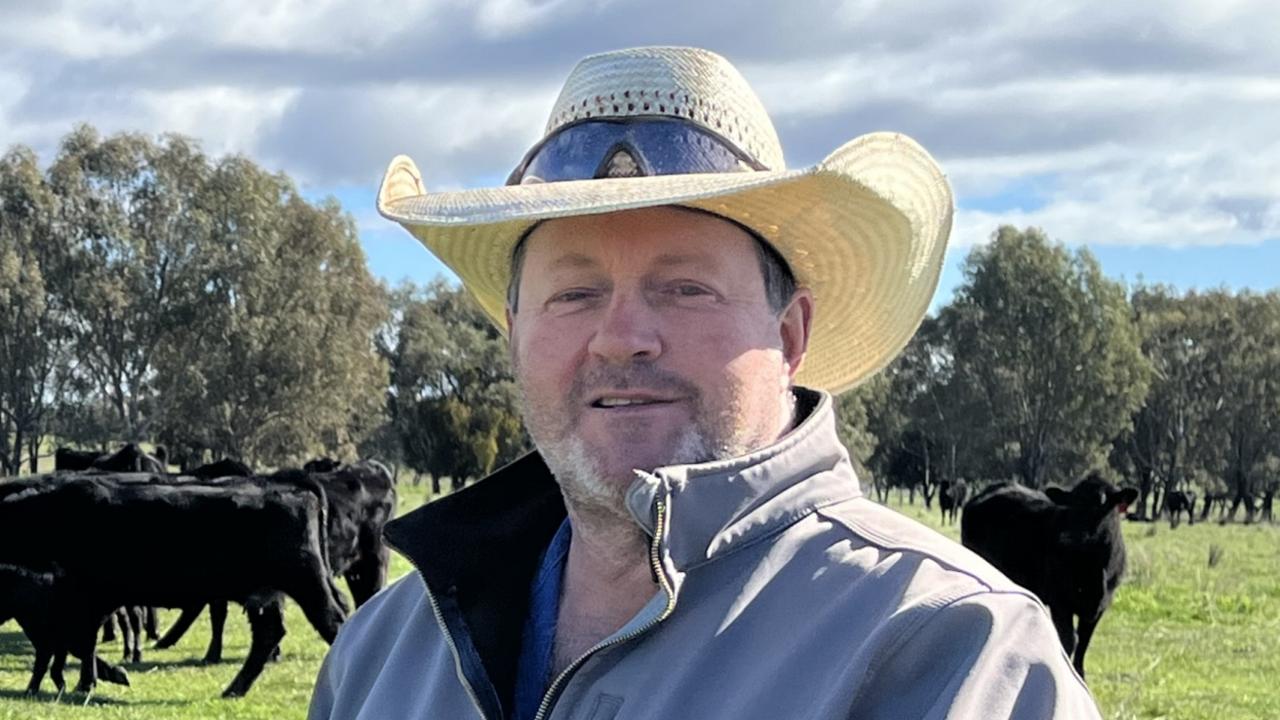Dryland cotton: Carter family of Pine Ridge weatherproofs system
AN innovative family in NSW is making the most of its farm’s conditions, writes NICOLA BELL.

A FARMING system robust enough to cope with the variabilities in weather is the key for the Carter family.
Ian and Marilyn Carter, along with their son Harry, run their 2500ha dryland cropping and steer backgrounding operation at Pine Ridge on the NSW Liverpool Plains.
A lean and practical management style means they aren’t afraid to experiment and scrutinise to get the best outcomes.
With cropping the main enterprise, cotton, sorghum and mung beans are planted in summer, while wheat and chick peas are the main winter crops.
Ian said they generally grew about 60 per cent summer crops and 40 per cent winter, but it depended on the rotations.
This year the Carters planted 500ha of dryland cotton, using the new Bollgard 3 Sicot 714B3F variety, which changes the rules on pupae busting and offers better disease resistance and yield potential.
While they haven’t been growing cotton for long compared to others, they must be doing something right, with their Connamara Partnership named Grower of the Year at the Australian Cotton Industry Awards earlier this year.
MARKS MEN
IAN said they decided to get in to cotton after benchmarking with farm consultants, Agripath, they realised people in their area growing cotton had better gross margins.
“We felt like we had to give it a go and see if it worked for us,” Ian said.
With this year’s cotton crop their seventh, Ian said they have learnt a lot in that time.
The Carters started off on one-metre row spacing, but have since moved to 1.5-metre rows.
“We started with the industry standard, but being dryland we needed to look at moisture conservation and the wider rows are better for moisture,” he said.
“We did a few years of trials and the wider rows out-yielded the smaller rows.”
A short planting window added further complications to growing dryland cotton.
Planting is in October with picking in late April and early May.
“We don’t have a long planting window, so have missed out on getting half our cotton in some years because we were waiting for rain,” he said.
To solve this issue, the Carters use water injection at planting.
Ian said while water injection technology wasn’t new, they developed it for their own purpose.
He converted the planting equipment himself and now has a water tank which attaches on to the back of the seeder.
“Basically it squirts water in to the soil as the seed goes in,” he said.
“It gives us the option of planting whenever we want.”
TRAFFIC COP
ALONG with a four-year cotton rotation, wider rows, good stubble cover and water injection, the Carters also use no-till controlled traffic farming, all of which conserve soil moisture and drive yield outcomes during erratic seasonal conditions.
“All of the things we do are aiming to conserve moisture as that is our key asset,” Ian said.
“Weather is challenging, so we try to build a system that is robust enough to cope.
“Unlike irrigated crops we can’t just turn on the water when we need it.”
Ian said they have had a run of dry years so yields for the cotton have varied from 3 bales/ha to 8 bales/ha.
He said they’d like to see an average of 5.5 bales/ha.
Yield mapping has been carried out at Connamara for 20 years with an electromagnetic soil mapping survey conducted on all paddocks.
Ian said they also use aerial imagery and satellite maps. From these maps variable rate fertiliser is added and they were looking at using a variable rate growth regulator.
“Yield mapping and variable rate fertiliser and chemicals help in incremental steps,” he said.
In comparison he said zero-till, Bollgard technology and round bale pickers were big leaps for the industry.
ADDS UP
THE Carters pay careful attention to inputs such as fertiliser and pest control.
While cotton is a more expensive crop to grow, Ian said the gross margins were better.
“Up until mid-season you spend the same amount on cotton as other summer crops, it is at the end of the season when defoliation, picking and transport costs occur it is more expensive,” he said.
And even though dryland cotton yield is about half that of irrigated cotton, price made up for it at about $500 a bale.
“Price is a driver, but yield always beats prices with any crop,” Ian said.
The Carters’ cropping operation is rounded out by 500ha of sorghum and 250ha of mung beans this year.
Ian said they usually planted 800ha of winter crops, with this year’s chick peas and wheat yet to be harvested.
“We are about three weeks behind with the chick peas.”
Mung beans are an opportunity crop, and the rotation involved cotton on long fallow, two sorghum crops, then chick peas and wheat.
BOLL OF LIFE
IAN said they were still working on the cotton rotation as pupae busting meant they couldn’t plant straight back in to the same paddock because there wasn’t enough surface moisture.
With the new Bollgard 3 variety, however, it meant if defoliation was carried out before March 31 then they didn’t have to pupae bust at all.
They plan to double crop, meaning they would pick the cotton and plant straight back in with a cereal crop.
Machinery conversion also helped the Carters be more efficient and cost effective.
Ian said as they’ve needed something he has built the machinery or added things to existing machinery, like the water injection unit.
He has also converted a cotton picker in to a forklift to lift cotton bales on to trucks.
With an average rainfall of 650mm, Ian said they had recorded 609mm since June.
“The first half of this year was desperately dry, then it rained in June and have been battling with it being too wet ever since.”


